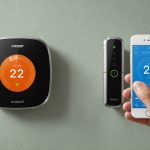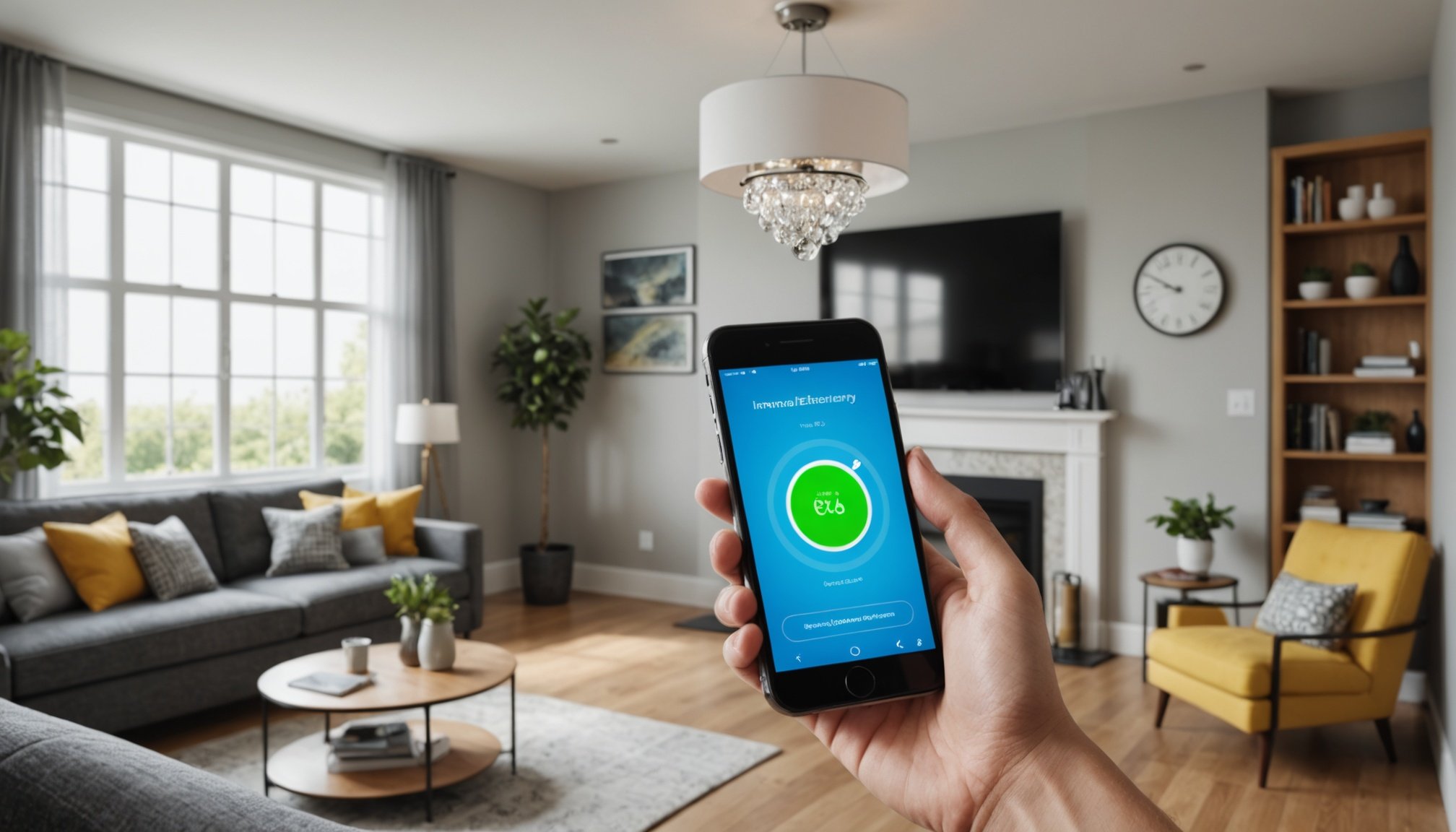Unlock Ultimate Energy Efficiency in Your Smart Home: Innovative Smartphone Tactics for Savings
In the era of smart home technology, optimizing energy efficiency has never been more accessible or intuitive. With the right strategies and devices, you can transform your home into an energy-efficient haven, saving both money and the environment. Here’s a comprehensive guide on how to leverage your smartphone and various smart home technologies to achieve ultimate energy efficiency.
Smart Thermostats: The Heart of Home Automation
Smart thermostats are one of the most effective tools for managing energy consumption in your home. These devices, like Google Nest or Ecobee, learn your occupancy patterns and adjust the temperature accordingly, ensuring that your heating and cooling systems operate efficiently.
Topic to read : Unlock ultimate energy savings: a guide to linking your smartphone with a smart thermostat
How Smart Thermostats Contribute to Energy Efficiency
Smart thermostats avoid unnecessary heating by learning when spaces are unoccupied. For instance, if you’re away from home or asleep, the thermostat can automatically lower the temperature, significantly reducing wasted energy[3].
- Automated Scheduling: Smart thermostats allow you to set a schedule that reduces heating during off-peak times and maximizes efficiency when occupants are home. You can program the thermostat to lower the temperature when everyone is at work or school and gradually warm up the house shortly before anyone returns.
- Real-Time Control: With the ability to control your thermostat remotely via your smartphone, you can adjust the heating system even when you’re not at home. This feature is particularly useful for people who travel or often leave the house for extended periods[3][4].
- Proactive Maintenance Alerts: Many smart thermostats have sensors and alert features that provide early warnings of potential issues, such as detecting unoccupied rooms or integrating with weather data to make proactive adjustments.
Smart Lighting Systems: Illuminating Energy Savings
Smart lighting systems are another crucial component in the quest for energy efficiency. These systems, such as Philips Hue or Lutron, can be integrated with your solar energy systems and controlled remotely or automated through mobile apps or smart home assistants.
Topic to read : Elevate your smartphone to a smart garden control center: a comprehensive step-by-step guide
Benefits of Smart Lighting
- Energy-Efficient LEDs: Smart lighting systems often use LED bulbs, which are significantly more energy-efficient than traditional lighting. These bulbs can be programmed to run primarily on solar power during the day, reducing reliance on grid electricity[1][4].
- Remote Control and Automation: You can control your lights remotely from your phone, ensuring you never return home to a dark house. Scheduling and automation features enable lights to turn on at specific times or in response to events like motion detection or sunset[4].
- Customizable Lighting: Smart bulbs allow you to change the brightness and color of the lights to suit your mood or event, adding a layer of convenience and ambiance to your home.
Smart Plugs and Outlets: Managing Energy Consumption at the Source
Smart plugs and outlets are simple yet effective tools for managing the energy consumption of individual appliances and devices.
How Smart Plugs Work
- Remote Control: Smart plugs can be controlled remotely via a smartphone app, allowing you to turn appliances on and off or schedule power times to minimize unnecessary consumption[2][5].
- Energy Monitoring: These plugs provide real-time data on energy usage, helping you understand which appliances are consuming the most energy and make informed decisions about your consumption.
- Automation: You can automate smart plugs to turn off devices when not in use, preventing standby power consumption and reducing overall energy waste.
Voice-Controlled Assistants and Integration: The Central Hub of Your Smart Home
Voice-controlled assistants like Amazon Alexa and Google Assistant are pivotal in streamlining your home’s energy management.
Integrating Voice Assistants with Smart Devices
- Seamless Control: These assistants allow you to operate smart lights, thermostats, locks, and more with simple voice commands, making everyday tasks faster and easier[1][4].
- Automation Routines: You can create routines that automate multiple tasks with a single voice command. For example, saying “Good morning” can turn on the lights, adjust the thermostat, and start your coffee maker.
- Real-Time Information: Voice assistants provide quick information and set reminders, helping you stay on top of your energy usage and maintenance needs.
Advanced Energy Management and Sustainability
Integrating solar energy systems with smart home technology is a key step towards achieving ultimate energy efficiency.
Solar Energy Integration
- Real-Time Monitoring: Smart meters and energy monitoring systems provide valuable insights into your energy usage patterns, enabling you to make informed decisions about your consumption. You can monitor your solar panel output, battery levels, and view historical energy data through dedicated mobile apps[1][4].
- Automation Based on Solar Production: Devices like Amazon Alexa can be connected to your solar platform to automate routines based on solar production. For example, Alexa can turn on appliances during peak solar output, maximizing energy efficiency[1].
Practical Insights and Actionable Advice
Here are some practical tips to help you get the most out of your smart home devices and systems:
Tips for Maximizing Energy Efficiency
- Conduct an Energy Audit: Use smart meters and energy monitoring systems to identify areas of high energy consumption in your home.
- Automate Your Routine: Set up automation routines that adjust your thermostat, lighting, and appliances based on your daily schedule.
- Use Smart Lighting: Program your smart lighting to use solar power during the day and adjust brightness based on natural light availability.
- Invest in Smart Appliances: Consider upgrading to smart appliances that can be controlled remotely and optimized for energy efficiency.
Detailed Bullet Point List: Features of Smart Home Devices
Here’s a detailed list of features you should look for in smart home devices to maximize energy efficiency:
- Smart Thermostats
- Automated scheduling
- Real-time control via smartphone
- Proactive maintenance alerts
- Integration with weather data
- Learning occupancy patterns
- Smart Lighting Systems
- Energy-efficient LED bulbs
- Remote control and automation
- Customizable lighting options
- Integration with solar energy systems
- Smart Plugs and Outlets
- Remote control via smartphone app
- Energy monitoring and real-time data
- Automation to turn off devices when not in use
- Voice-Controlled Assistants
- Seamless control over multiple devices
- Automation routines with voice commands
- Real-time information and reminders
- Solar Energy Systems
- Real-time monitoring of energy production and consumption
- Automation based on solar production
- Integration with energy storage systems like Tesla Powerwall
Comprehensive Table: Comparison of Smart Home Devices
Here is a comparison table of some popular smart home devices, highlighting their key features and benefits:
| Device | Key Features | Benefits |
|---|---|---|
| Google Nest Thermostat | Automated scheduling, real-time control, proactive maintenance alerts | Significant energy savings, improved home comfort |
| Philips Hue Smart Lights | Energy-efficient LEDs, remote control, customizable lighting options | Reduced electricity use, enhanced ambiance and security |
| Amazon Alexa | Seamless control over multiple devices, automation routines, real-time information | Streamlined household management, convenience, and energy efficiency |
| Smart Plugs | Remote control via app, energy monitoring, automation | Reduced standby power consumption, better energy management |
| Tesla Powerwall | Real-time monitoring of energy production and consumption, automation based on solar production | Maximized energy efficiency, reduced reliance on grid electricity |
Quotes and Real-Life Examples
- “Smart thermostats are paving the way toward more energy-efficient, sustainable heating solutions. By providing automated scheduling, remote control, maintenance alerts, and seamless integration with other smart home devices, they help homeowners save both energy and money,” says Miranda Boutelle, Vice President of Operations and Customer Engagement at Efficiency Services Group[3].
- For example, a family in California integrated their solar panels with a smart home system, including a Google Nest Thermostat and Philips Hue smart lights. By automating their energy consumption based on real-time solar power availability, they were able to reduce their energy bills by over 30% and enhance their home’s comfort and security[1].
Achieving ultimate energy efficiency in your smart home is not just about installing the latest gadgets; it’s about integrating these devices into a cohesive system that works in harmony to minimize energy waste and maximize comfort. By leveraging smart thermostats, smart lighting systems, smart plugs, voice-controlled assistants, and solar energy integration, you can create a home that is not only energy-efficient but also sustainable and cost-effective.
Remember, the key to maximizing energy efficiency is automation, real-time monitoring, and smart integration. With the right strategies and devices, you can transform your home into an energy-efficient haven that benefits both your wallet and the environment. So, take the first step today and unlock the full potential of your smart home.











